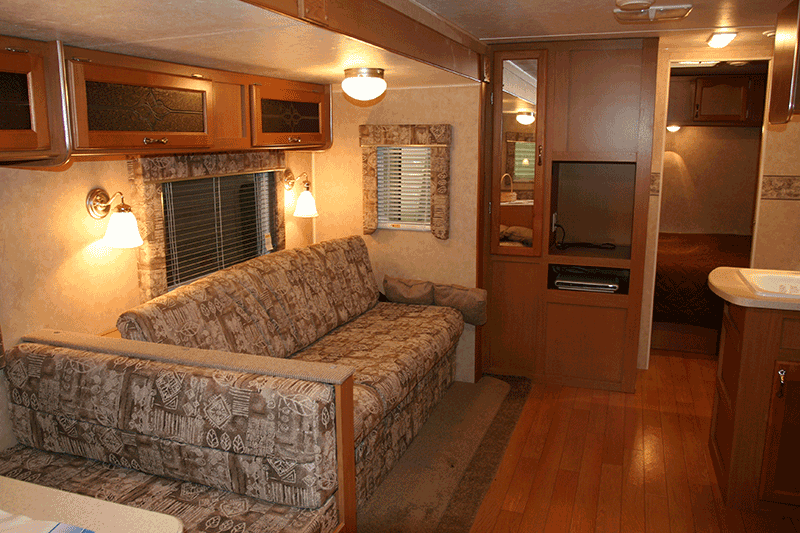Making some small adjustments with your lighting can make some big changes in your RV and the environment- here’s what you need to know.
Every year, RV models get more efficient, more luxurious, and more popular among all age groups. Our RVs come equipped with a lot of things, but there is always more you can do to make your RV more environmentally and family friendly. LED lights help RV owners accomplish these things because of their energy efficient and energy saving capabilities.
What are the benefits of converting to LED lighting?
The energy savings alone and reduced power draw can be enough to convince some RV owners. LED bulbs convert more energy into light instead of heat. Some sources say that 95 percent of the energy used translates into light. This helps to prevent a drain on your batteries and gives you the ability to spend more time “off grid” should you so choose. LEDs also burn at lower temperatures, 80-100 degrees compared to 200 for Halogen and incandescent lights, which means your RV stays cooler. In the summer months, that could save you from having to turn on the air conditioner.
The life of an LED bulb is much longer than that of an incandescent, fluorescent, or halogen bulb. The projected life of an LED bulb is 50,000 hours compared to 10,000 for a CFL and 2,000 for an incandescent bulb.
Aren’t LED lights more expensive?
Yes, but there are ways to curb the costs as well as justify them. The benefits listed above – extended life, energy efficiency – just because you want to use LED lights in your RV doesn’t mean you need to convert every single light. Start with the ones in areas that are used the most, such as in the kitchen, bedrooms, and bathrooms… maybe even the exterior awning if you like to sit out a lot in the evenings. Consider a warranty for your LED bulbs in case anything should go askew.
How do I choose an LED bulb for my RV?
First, you need to know what kind of lights your RV currently uses – fluorescent, incandescent, or halogen. The LED light you choose depends on the kind of light that was there before because of the base you’ll need your LED bulb to fit. The M4 Products website helps with making this conversion. Make sure to check the socket before you go and make your purchase so that you can be sure you’re making the right choice.
You’ll also need to consider the brightness and color temperature. Just like your standard incandescent bulbs, LED bulbs are available in a variety of choices. Choose from cool white, natural white, or warm white, which will affect the glow and harshness of the light in and around your RV. Also, the brightness of an LED bulb is based on lumens, not watts. For instance, a 100 watt incandescent bulb equals a 1500 lumen LED bulb.
Do I need a professional electrician to install anything?
It depends on what adjustments you want to make to your RV’s lighting and how comfortable you are with taking care of the job yourself. If you want to add LED lights under the cabinets for better visibility of countertops for instance, you can consider LED light strips, which you can likely install yourself. But if you have any doubts, call in a pro.
Are LED bulbs more environmentally friendly if they need to be replaced?
This should be an infrequent occurrence, especially after what you’re probably used to with incandescent or fluorescent bulbs. However, it should be noted that LED bulbs can overheat (high ambient temperature) or may not handle voltage fluctuations well. Keep these things in mind to limit the chances of losing a bulb.
LEDs don’t use mercury, a plus, but they still contain nickel and lead. That means they need to be disposed of properly. Don’t just throw them away in the trash unless the local waste management has a process that separates recyclables from trash – you don’t want those chemicals to end up in the landfill. There might be drop off sites you can visit, too, or stores that offer recycling services, such as at Batteries Plus locations.

